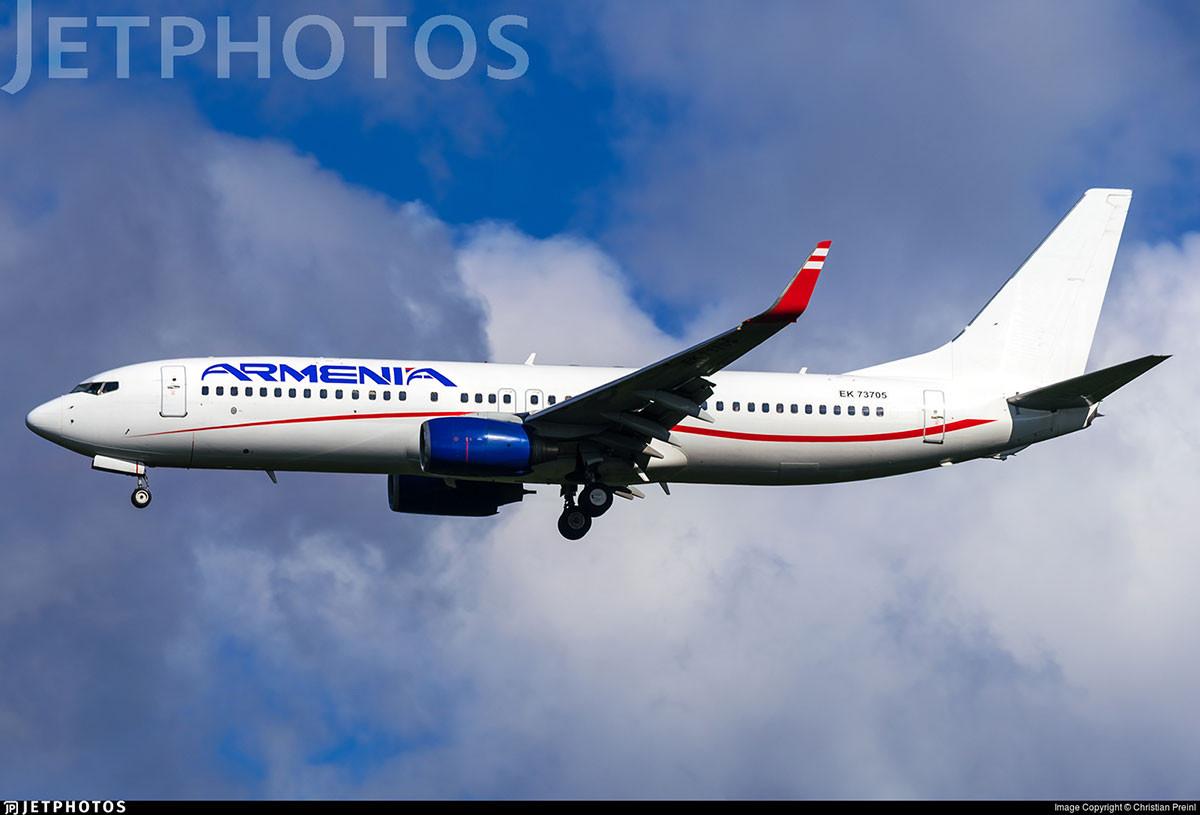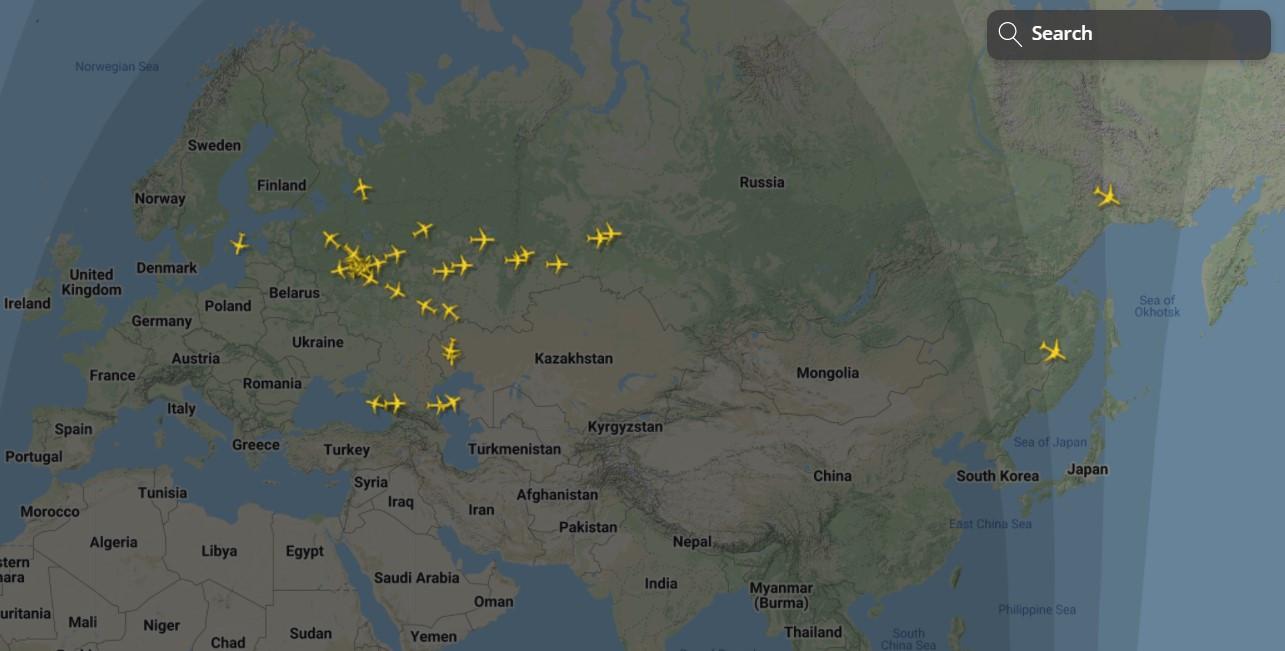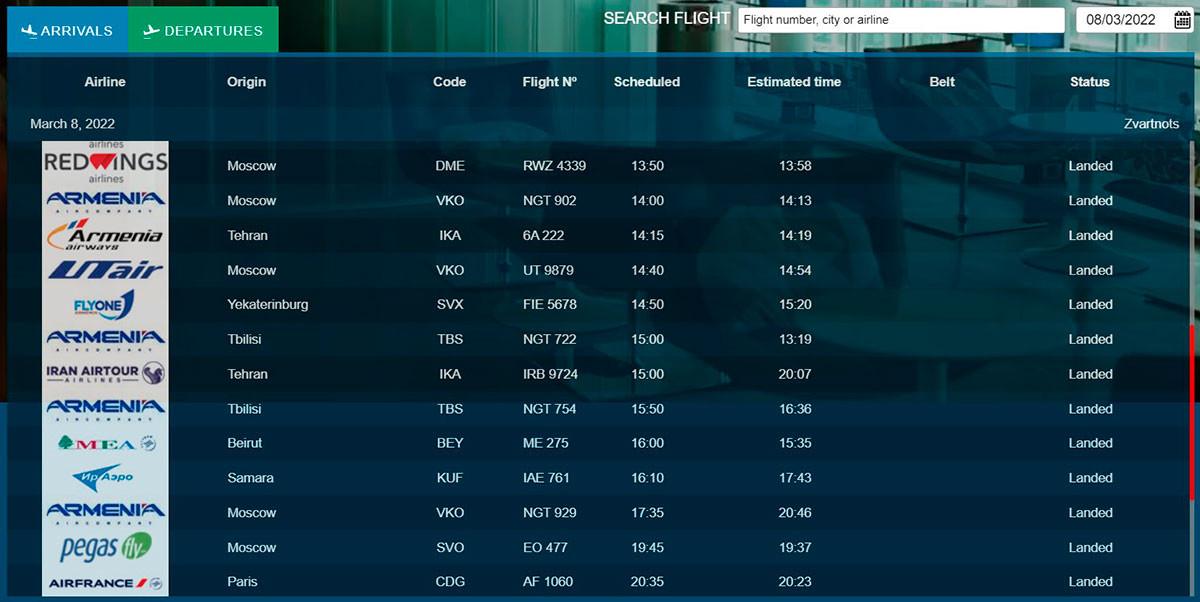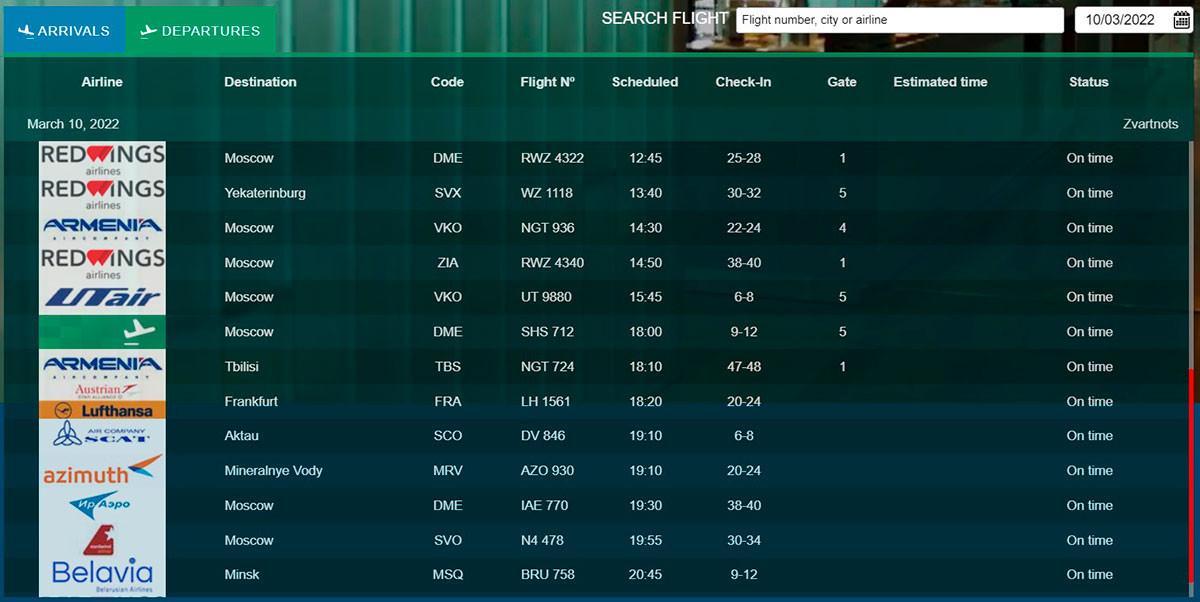
Russian Air Carriers Being Squeezed; Can Armenian Operators Fill the Gap?
After Russian forces invaded Ukraine and the West imposed economic sanctions on Russia, Russian aviation faces a very difficult situation.
Airbus and Boeing, the two aircraft manufacturing giants, have ceased cooperating with Russian carriers. In addition, foreign leasing companies are demanding the return of their planes from Russian operators.
On March 3, Armenian aviation authorities did not allow a Siberia Airlines’ Airbus A320neo plane to return to Novosibirsk from Yerevan, as a problem arose between its Irish owner, the country of registration (the Bermuda Islands), and the Russian operator.
Russian operators renting planes from foreign leasing companies are in a difficult situation today.
The dilemma of returning more than 700 aircraft from Russian leases
Among the sanctions against Russia, the European Union (EU) has ordered leasing companies registered in its territory to terminate aircraft lease agreements with Russian operators by March 28 and demand their return. The EU has banned not only the sale of aircraft and spare parts to Russia, but also the provision of any services, including leasing.
According to ch-aviation.com, the situation is further complicated by the fact that the deadline set by the EU is quite short, and it is not clear how the Russian authorities and airlines will cooperate with foreign aircraft owners if they refuse to return the aircraft (this is a very real risk). What should the owners do in this case? Another issue is how operators will pay aircraft rent if Russian banks are removed from the international SWIFT transfer system.
According to ch-aviation.com, at issue is the return of some 700 planes from Russian leases. According to Russian sources, Russia is considering the option of nationalizing the aircraft, i.e., buying them from foreign owners, although in this case, according to ch-aviation, the government is thinking only of helping the national air carrier Aeroflot. But will the same European leasing companies, which are banned from selling aircraft or spare parts to the Russians, agree to this option? Then too, what will happen when it comes time to buy new spare parts for aircraft? It should be noted that in addition to Airbus and Boeing, the Brazilian manufacturing giant Embraer has also refused to supply aircraft and spare parts to Russia.
Theoretically, it is possible that Russia will simply keep the planes belonging to foreigners without paying. Bloomberg estimates that in this case there will be a risk of losing billions of dollars.
We should note that the risk of confiscation of aircraft by leasing companies will affect Russian airlines in different ways. For example, Aeroflot will suffer relatively little, as it owns more than 50 aircraft and has leased 17 to its subsidiaries Avrora, Pobeda, and Rossiya. Utair, which also has a large fleet of its own aircraft (50 of 70 are owned by Utair) is somewhat safe. Siberia, Ural Airlines, Pobeda and Rossiya are dependent on leasing agreements.
Russia is afraid that its airlines' planes will be seized overseas
Facing a real threat of aircraft closures in other countries, Russia's Federal Air Transport Agency (Rosaviatsiya), advised Russian airlines to suspend all passenger and cargo flights abroad as of March 6 and all foreign flights to Russia as of March 8. Planes of Russian airlines registered outside Russia that are leased by foreign companies are in danger. Planes of Russian operators that are registered in Russia or even abroad and face no seizure risk, are free from the danger of encountering obstacles. Of course, planes not leaving Russian airspace also face no problem.
For example, in the below map taken from the online flight tracking site flightradar24.com, Aeroflot planes are currently flying exclusively between Russian cities.
Rosaviatsiya advised Russian citizens to return to Russia by direct flights of foreign airlines (i.e., via those whose entry to Russia is not restricted. At the end of February Russia closed its skies to 36 countries in response to similar moves by those countries), or by transit flights through Azerbaijan, Armenia, Kazakhstan, Qatar, UAE, Turkey and Serbia. These are the countries where Russian operators can arrive, and vice versa. The entry of their carriers to Russia is not prohibited. Rosaviatsiya advised that another way to reach Russia, for example, was to reach Latvia, Lithuania, Poland or Finland by plane, and then to Russia overland.
Rosaviatsiya’s advice was followed by announcements by Russian companies to suspend international flights.
Some Russian airlines continue to fly to Armenia
Armenia is one of the countries that has not banned Russian carriers from entering its airspace and Armenian planes have no problem flying over Russia. However, as in the case of Siberia aircraft, it can’t be ruled out that planes of Russian airlines registered abroad will encounter a problem in Armenia. This will depend exclusively by the relevant requirements submitted by the owner of the aircraft and / or the country of registration to Armenia’s Civil Aviation Committee.
According to the Zvartnots Airport website, on March 8, Russian carriers Nordwind Airlines, Red Wings Airlines, Utair and Ikar Airlines (brand: Pegas Fly) landed in Yerevan from Moscow, and Azimuth arrived from Ufa and Mineralnye Vody, Ikar Airlines from St. Petersburg, Red Wings Airlines from Yekaterinburg, IrAero from Samara (see below).
The situation is different at Gyumri’s Shirak Airport which is used only by Russian operators․ In recent days, they have canceled their flights to Gyumri (see below).
If this tendency continues in the long haul, we will soon see a sharp decline in passenger flows to Shirak. The same, by the way, is expected for Zvartnots, at a relatively slower pace, unless Russian or Armenian operators close the gap created by several carriers, including Aeroflot, temporarily leaving the Armenian market.
What are Armenian airlines doing?
As we’ve written, in the current situation, Armenian airlines and Yerevan's Zvartnots Airport may reap economic benefits from the situation. It’s another question if they’ll be able to exploit such opportunities.
The problem is that the total fleet of Armenian carriers is very small. Nevertheless, the Zvartnots flight schedule and the flightradar24.com website show the planes of one of the Armenian carriers entitled to fly to Russia working at a busy clip. The other carrier, less so.
Aircompany Armenia’s Boeing 737-500 (EK-73736) returned to Yerevan from Batumi on the night of March 8, then made the Yerevan-Moscow-Yerevan-Tbilisi-Yerevan flight, then left for St. Petersburg and returned to Yerevan.
The airlines other plane (Boeing 737-800; registration EK-73792), made Yerevan-Moscow-Yerevan, Yerevan-Tbilisi-Yerevan and Yerevan-Moscow-Yerevan flights on March 8. The third plane (Boeing 737-800; registration EK-73705 registration), flew the Yerevan-Moscow-Yerevan-Tbilisi-Yerevan-Moscow-Yerevan-Tbilisi routes.
The second operator, Fly One Armenia, started flying to Russia on March 1. Both company planes are leased from its Moldovan partner Fly One and have not changed the Moldovan registration. The Airbus A320 (registration ER-00006) made the Yerevan-Yekaterinburg-Yerevan flight on March 8 and had flown to Moscow previous days.
Given the increased demand, Armenian operators should try to get permission as soon as possible to organize flights to Russian destinations. We have written that Armenia Airways, operating the Yerevan-Tehran-Yerevan route, has such a program. According to the Zvartnots Airport website, Shirak Avia will leave Yerevan for Moscow on March 10 (flight number SHS 712).
The Shirak Avia flight returns to Yerevan on the night of March 11.
Top photo: Aircompany Armenia plane EK-73705 in the skies over Moscow (Sept. 6, 2021). jetphotos.com
 Videos
Videos Photos
Photos




Write a comment